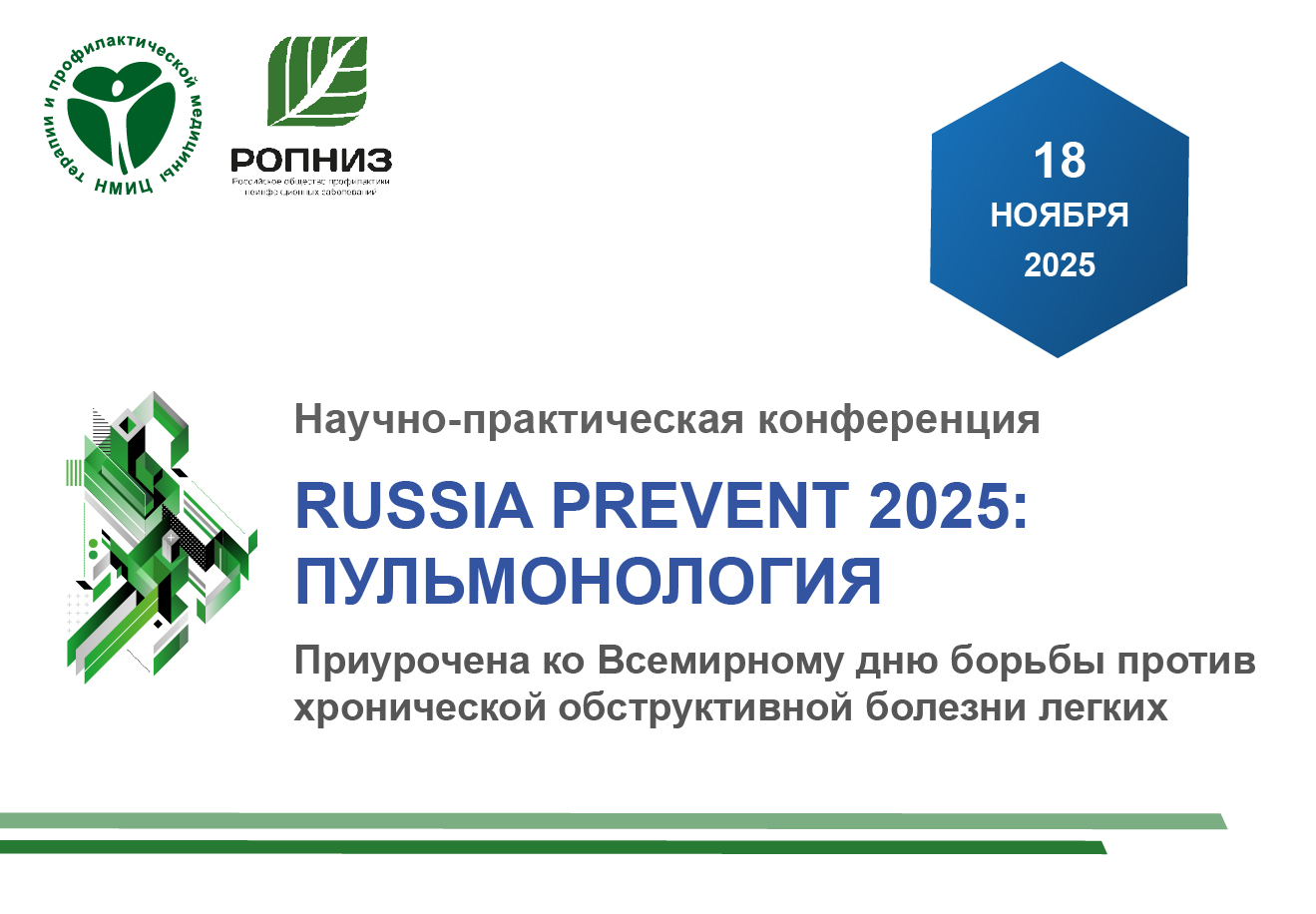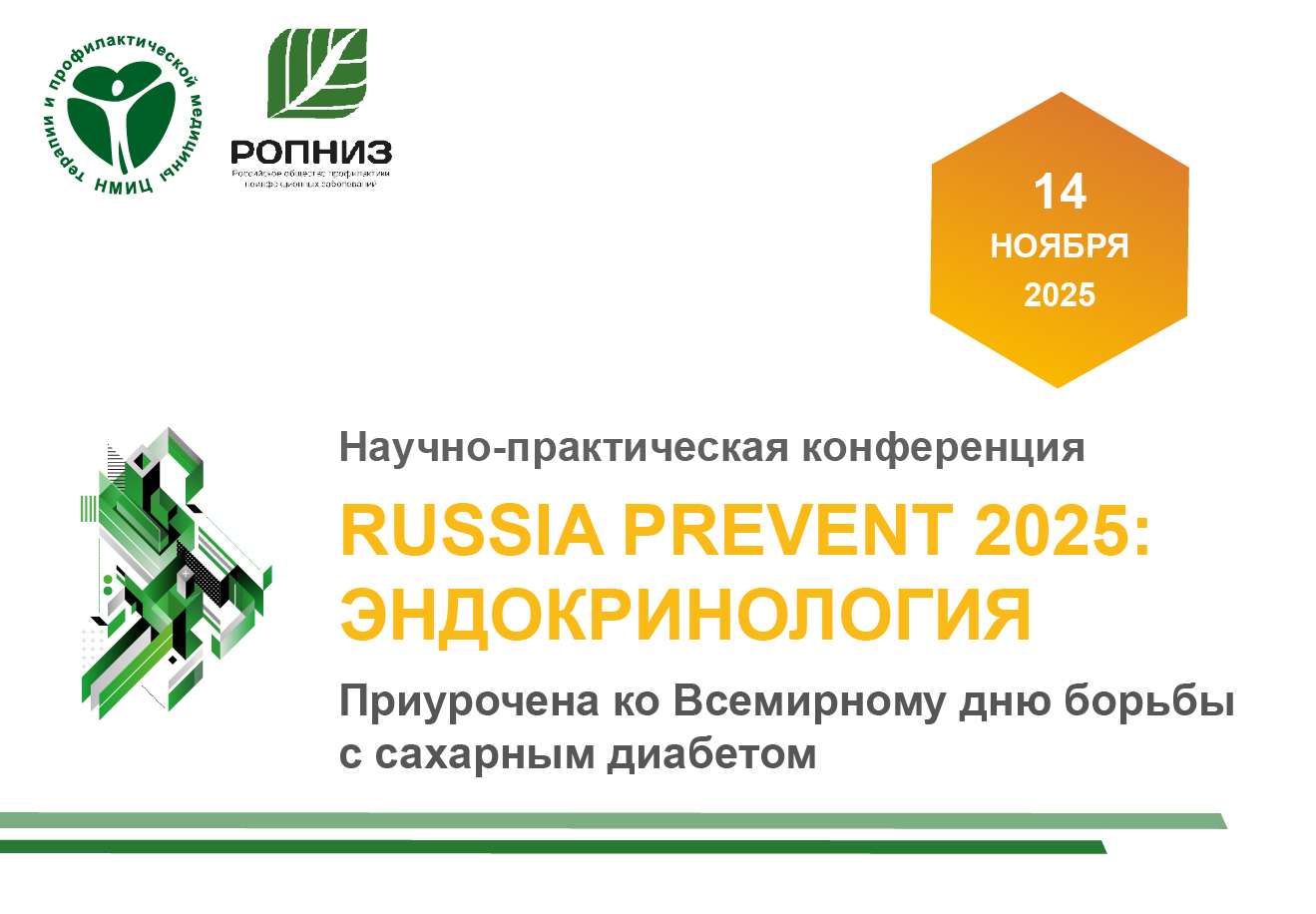RISK OF THROMBOEMBOLIC COMPLICATIONS AND ANTITHROMBOTIC THERAPY IN IN-PATIENTS WITH PERMANENT AND RECURRENT ATRIAL FIBRILLATION IN REAL CLINICAL PRACTICE
https://doi.org/10.20996/1819-6446-2012-8-5-675-680
Abstract
Aim. Тo evaluate compliance of ongoing antithrombotic therapy (ATT) in various forms of atrial fibrillation (AF) with the risk level of thromboembolic complications (TEC), calculated with the СHADS2 and CHA2DS2–VASc scales in real clinical practice. Material and methods. A retrospective study of hospital records of 308 in-patients admitted to the cardiology departments of two multidisciplinary hospitals during the year because of nonvalvular AF . Risk of thromboembolic complications was estimated with the CHADS2 and CHA2DS2–VASc scales and appointed ATT was analyzed. Results. Patients with high risk of TEC were predominated in the study population: 77.6% and 91.9% according to CHADS2 and CHA2DS2–VASc scales, respectively. Moderate risk was found in 17.6% and 6.1% of patients according to CHADS2 and CHA2DS2–VASc scales, respectively. Only 32.2% and 28.6% 28.6% of patients at high risk according to CHADS2 and CHA2DS2–VASc scales, respectively received warfarin in hospital. All patients with permanent AF in this sample had a high risk of TEC according to the both scales. In the group of paroxysmal/persistent AF the high, moderate and low risk of TEC was identified in 87%, 9.9%, and 3.1% of patients, respectively , according to CHA2DS2–VASc scale and in 64.25%, 28.5% and 7.5% of patients, respectively , according to CHADS2 scale. Difference in high-risk patient rate was not significant among patients with permanent AF . In high risk group contraindications for receiving indirect anticoagulants were more frequent in the group with permanent AF (OR 3.1; 95% CI 0.88–10.7; p>0,05). The probability of warfarin prescription in patients with permanent AF was higher than in patients with paroxysmal or persistent AF (OR 1.98, 95% CI 1,18-3,31), and probability of aspirin prescription was lower (OR 0.82; 95% CI 0,51-1,32; p>0,05). Conclusion. In real clinical practice oral anticoagulants are prescribed insufficiently in patients at high risk. Usage of CHA2DS2–VASc scale compared with usage of CHADS2 scale, leads to significant increase in the proportion of patients at high risk due to reduction in the proportion of patients with moderate risk in persistent or permanent AF . Usage of CHADS2 scale can lead to an underestimation of the TEC risk in patients with persistent or permanent AF .
About the Authors
I. V. GrajferRussian Federation
Saratov State Medical University named after V.I. Razumovsky
L. E. Kuvshinova
Russian Federation
P. V. Dolotovskaya
Russian Federation
O. V. Reshet'ko
Russian Federation
N. V. Furman
Russian Federation
References
1. National guidelines for the diagnosis and treatment of atrial fibrillation. Rational Pharmacother Card 2011; 4 (suppl): 1–80. Russian (Национальные рекомендации по диагностике и лечению фибрилляции предсердий. РФК 2011; 4 (приложение): 1–80.
2. Camm A.J., Kirchhof P., Lip G.Y. et al. Guidelines for the management of atrial fibrillation: the Task Force for the Management of Atrial Fibrillation of the European Society of Cardiology (ESC). Europace 2010;12:1360–1420.
3. Fuster V., Rydén L.E., Cannom D.S. et al. 2011 ACCF/AHA/HRS Focused Updates Incorporated Into the ACC/AHA/ESC 2006 Guidelines for the Management of Patients With Atrial Fibrillation: A Report of the American College of Cardiology Foundation/American Heart Association Task Force on Practice Guidelines. Circulation 2011; 123:e269–e367.
4. Heeringa J., van der Kuip D.A., Hofman A. et al. Prevalence, incidence and lifetime risk of atrial fibrillation: the Rotterdam study. Eur Heart J 2006;27:949–953.
5. Lloyd-Jones D.M., Wang T.J., Leip E.P. et al Lifetime risk for development of atrial fibrillation: the Framingham Heart Study. Circulation 2004;110(9):1042–1046.
6. Benjamin E.J., Wolf P.A., D'Agostino R.B. et al Impact of atrial fibrillation on the risk of death: the Framingham Heart Study. Circulation 1998; 98(10):946–952.
7. Stewart S., Hart C.L., Hole D.J., McMurray J.J. A population-based study of the long-term risks associated with atrial fibrillation: 20-year follow-up of the Renfrew/Paisley study. Am J Med 2002;113(5): 359–64.
8. Lip G.Y.H. Stroke in atrial fibrillation: epidemiology and thromboprophylaxis. J Thromb Haemost 2011;9 (Suppl 1): 344–351.
9. Hughes M., Lip G.Y.H., on behalf of the Guideline Development Group for the NICE national clinical guideline for management of atrial fibrillation in primary and secondary care Stroke and thromboembolism in atrial fibrillation: A systematic review of stroke risk factors, risk stratification schema and cost effectiveness data. J Thromb Haemost 2008; 99: 295–304.
10. Dulli D.A., Stanko H., Levine R.L. Atrial fibrillation is associated with severe acute ischemic stroke. Neuroepidemiology 2003;22:118–123.
11. Lin H.J., Wolf P.A., Kelly-Hayes M. et al Stroke severity in atrial fibrillation. The Framingham Study. Stroke 1996;27:1760–1764.
12. Nieuwlaat R., Olsson S.B., Lip G.Y. et al European Heart Survey Investigators. Atrial fibrillation management: a prospective survey in ESC member countries: the Euro Heart Survey on Atrial Fibrillation. Eur Heart J 2005;26:2422–2434.
13. Veronique L.R., Alan S.G., Donald M.L.-J. et al. Heart Disease and Stroke Statistics: 2011 Update: A Report From the American Heart Association. Circulation 2011;123;e18–e209.
14. Hart R.G., Halperin J.L. Atrial fibrillation and stroke: concepts and controversies. Stroke 2001;32(3): 803–8.
15. Wolf P.A., Abbott R.D., Kannel W.B. Atrial fibrillation as an independent risk factor for stroke: the Framingham Study. Stroke 1991;22:983–988.
16. Gage B.F., Waterman A.D., Shannon W. et al Validation of clinical classification schemes for predicting stroke: results from the National Registry of Atrial Fibrillation. JAMA 2001;285:2864–2870.
17. Lip G.Y., Nieuwlaat R., Pisters R. et al Refining clinical risk stratification for predicting stroke and thromboembolism in atrial fibrillation using a novel risk factor-based approach: the Euro Heart Survey on atrial fibrillation. Chest 2010;137:263–272.
18. Lip G.Y.H. Can We Predict Stroke in Atrial Fibrillation? Clin Cardiol 2012;35, S1:21–27.
19. Sandhu R.K., Bakal J.A., Ezekowitz J.A., McAlister F.A. Risk stratification schemes, anticoagulation use and outcomes: the risk-treatment paradox in patients with newly diagnosed non-valvular atrial fibrillation. Heart 2011 97(24):2046–2050.
20. Olesen J.B., Torp-Pedersen C., Hansen M.L., Lip G.Y. The value of the CHA2DS2–VASc score for refining stroke risk stratification in patients with atrial fibrillation with a CHADS2 score 0–1: A nationwide cohort study. Thromb Haemost 2012;107(6):1172–1179.
21. Mason P.K.Т, Lake D.E.Т, DiMarco J.P.Т. et al. Impact of the CHA2DS2–VASc Score on Anticoagulation Recommendations for Atrial Fibrillation. The American Journal of Medicine 2012;6(125): 603.e1–603.e6.
22. Olesen J.B., Lip G.Y., Hansen M.L. et al. Validation of risk stratification schemes for predicting stroke and thromboembolism in patients with atrial fibrillation: nationwide cohort study. BMJ 2011; 342:d124.
23. Taillandier S., Olesen J.B., Clémenty N. et al. Prognosis in Patients with Atrial Fibrillation and CHA(2)DS(2)–VASc Score = 0 in a Community-Based Cohort Study. J Cardiovasc Electrophysiol 2012; 23(7): 708–13.
24. Friberg L., Hammar N., Rosenqvist M. Stroke in paroxysmal atrial fibrillation: report from the Stock-holm Cohort of Atrial Fibrillation. Eur Heart J 2010;31:967–975.
25. Healey J.S., Connolly S.J., Gold M.R. et al. Subclinical Atrial Fibrillation and the Risk of Stroke. N Engl J Med 2012;366:120–129.
26. Hohnloser S.H., Pajitnev D., Pogue, J. et al. Incidence of Stroke in Paroxysmal Versus Sustained Atrial Fibrillation in Patients Taking Oral Anticoagulation or Combined Antiplatelet Therapy: An ACTIVE W Substudy. JACC 2007; 50(22): 2156 – 2161.
27. Hart R.G., Pearce L.A., Rothbart R.M. et al. Stroke with intermittent atrial fibrillation: incidence and predictors during aspirin therapy. Stroke Prevention in Atrial Fibrillation Investigators. J Am Coll Car-diol 2000;35(1):183–187.
28. Andersen L.V., Vestergaard P., Deichgraeber P., et al. Warfarin for the prevention of systemic embolism in patients with non-valvular atrial fibrillation: a meta-analysis. Heart 2008; 94: 1607–1613.
29. Rebrova O. Statistical analysis of medical data. Application software package STATISTICA. Moscow: Mediasfera; 2002. Russian (Реброва. О.Ю. Статистический анализ медицинских данных. Применение пакета прикладных программ STATISTICA. М.: Медиасфера; 2002.
30. Lang T.A., Secic M. How To Report Statistics in Medicine. Annotated Guidelines for Authors, Editors, and Reviewers. Moscow: Prakticheskaya meditsina; 2011. Russian (Ланг Т.А., Сесик М. Как описывать статистику в медицине. Аннотированное руководство для авторов, редакторов и рецензентов. М.: Практическая медицина; 2011).
31. Friberg L., Rosenqvist M., Lip G.Y.H. Evaluation of risk stratification schemes for ischemic stroke and bleeding in 182 678 patients with atrial fibrillation: the Swedish Atrial Fibrillation cohort study. Eur Heart J 2012;33:1500–1510.
Review
For citations:
Grajfer I.V., Kuvshinova L.E., Dolotovskaya P.V., Reshet'ko O.V., Furman N.V. RISK OF THROMBOEMBOLIC COMPLICATIONS AND ANTITHROMBOTIC THERAPY IN IN-PATIENTS WITH PERMANENT AND RECURRENT ATRIAL FIBRILLATION IN REAL CLINICAL PRACTICE. Rational Pharmacotherapy in Cardiology. 2012;8(5):675-680. (In Russ.) https://doi.org/10.20996/1819-6446-2012-8-5-675-680















































